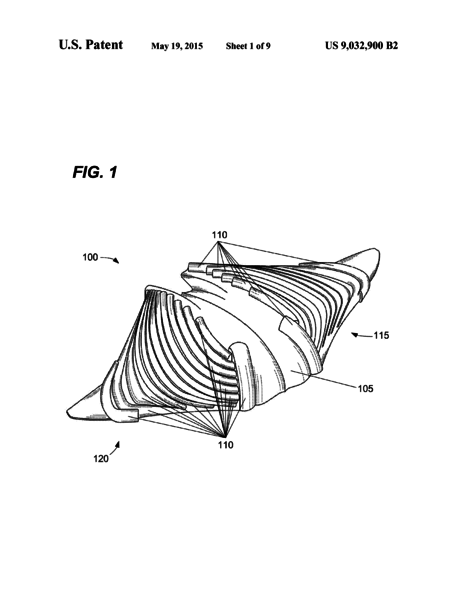Georgia Tech researchers have developed a submersible vehicle design suitable for extended underwater missions based on a improved batoid-based design. The vehicle uses buoyancy to effectively control descent and ascent, and by mimicking the movement of batoids, it has superior hydrodynamic characteristics.The vehicle has a system of bladders that are inflated or deflated selectively to control propulsion, roll, and pitch. The bladders are also used to control fins that can flap, oscillate, or undulate to further control movement of the vehicle—built on the morphology and control surface architecture of batoids.
- Extended range: This vehicle’s propulsion system does not require refueling, allowing for long range deployments.
- Nearly silent: Its limited use of mechanical components reduces the acoustic signature.
- Highly maneuverable: Scalable system provides three-dimensional maneuvering capabilities
- Vehicle for underwater operations- oceanographic exploration
- Military applications
- Unmanned vehicle
- Aircraft
- Surface marine vehicles
Most vehicles designed for underwater exploration are based on rigid-hull submarines. Their effectiveness is limited by the need to incorporate long tethered cables to a mother ship, propellers that become entangled in sea grass or debris, and rigid hulls that prevent maneuvering in close proximity to fragile ocean features. Furthermore, these vehicles require fuel for propulsion and cannot carry all that they would need for an extended deployment.Torpedo-shaped vehicles use buoyancy and gravity for efficient descend-ascend propulsion; however, these vehicles cannot readily maintain a constant depth and have limited maneuvering capabilities. More recently, researchers have explored the use of vehicles based on biomimicry of batoids—such as rays or skates—that employ mechanically actuated components for propulsion and maneuvering. However, these designs are complex and require considerable power—making them impractical for extended exploration.

